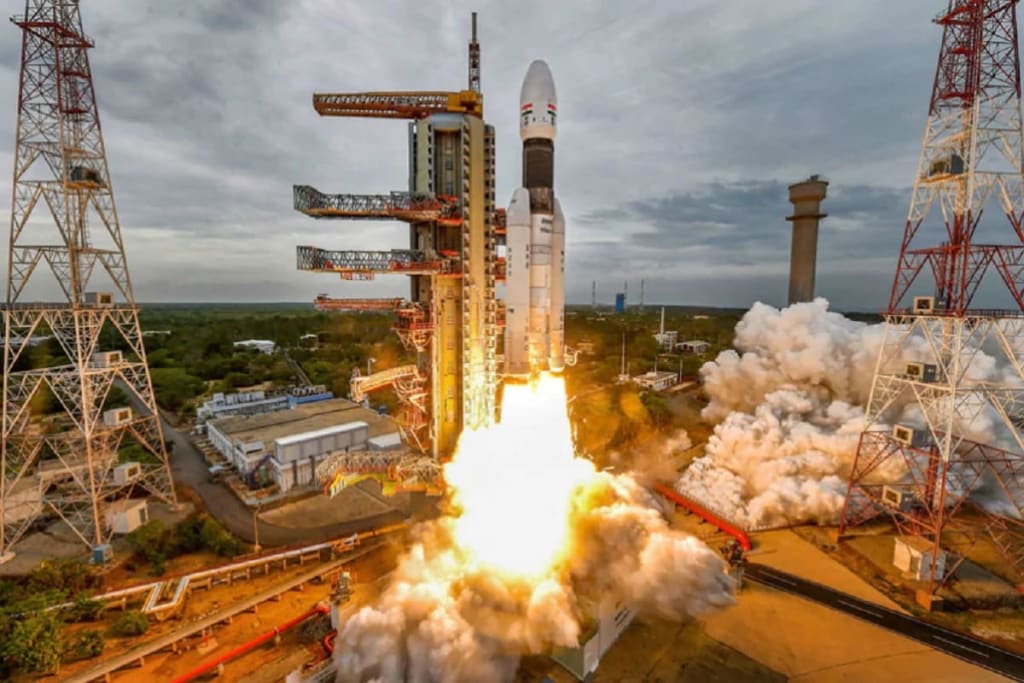Success story of Chandrayaan-3
Great things take time

The success story of **Chandrayaan-3** is a remarkable achievement in India's space exploration history. Launched on **14 July 2023**, the mission's Vikram lander successfully touched down on the Moon's South Pole on **23 August 2023**. This milestone made India the first nation to land a spacecraft on the Lunar South Pole, showcasing the country's advanced capabilities in space technology
The mission has been celebrated as a triumph of Indian innovation and determination, reflecting years of meticulous planning and engineering. It has inspired scientists, engineers, and dreamers across the nation and the world, emphasising the importance of bold ambitions and collaborative efforts in pushing the boundaries of human knowledge
The **Chandrayaan-3** mission overcame several challenges during its landing phase by implementing a "failure-based" design approach, which anticipated and mitigated potential issues based on lessons learned from the previous **Chandrayaan-2** mission. Some of the critical changes made to ensure a successful landing included:
- **Strengthening the Lander's Legs**: The lander was equipped with stronger legs to withstand the impact of landing on the lunar surface
- **Increasing Fuel Reserves**: More propellant was added to the lander to ensure it had enough fuel to adjust its descent and achieve a soft landing
- **Enhancing Landing Site Flexibility**: The software was updated, and the landing area was expanded to provide more options for a safe touchdown
- **Advanced Technologies**: The mission utilised advanced technologies such as hazard detection and avoidance systems on the rover, a landing leg mechanism for a soft touchdown, and altimeters and velocity instruments to estimate altitude and speed above the moon
These improvements played a crucial role in the mission's ability to navigate the complexities of lunar landing and achieve its historic touchdown on the Moon's South Pole
Chandrayaan-3 was equipped with a suite of scientific instruments designed to conduct various experiments and studies on the Moon. Here's a list of the key instruments onboard:
- **Lander Instruments**:
- **RAMBHA**: Radio Anatomy of Moon Bound Hypersensitive ionosphere and Atmosphere
- **ChaSTE**: Chandra's Surface Thermo-physical Experiment
- **ILSA**: Instrument for Lunar Seismic Activity
- **LRA**: Laser Retroreflector Array
- **Rover Instruments**:
- **APXS**: Alpha Particle X-Ray Spectrometer
- **LIBS**: Laser Induced Breakdown Spectroscope
- **Propulsion Module Instrument**:
- **SHAPE**: Spectro-polarimetry of HAbitable Planet Earth
These instruments were carefully selected to provide comprehensive data on the lunar environment, including seismic activity, temperature variations, and elemental composition. The mission's scientific payload was designed to enhance our understanding of the Moon and contribute to global knowledge in space science
Chandrayaan-3's mission to the Moon's South Pole has led to several key findings:
- **Traversing and Avoiding Craters**: The Pragyaan rover successfully navigated over 100 meters on the lunar surface, skillfully avoiding craters with the help of its special wheel mechanism and the command center's guidance
- **Temperature Variations**: Data from the lunar topsoil and up to 10cm below the surface showed a sharp temperature difference, with surface temperatures near 60°C and a drop to -10°C just below the surface
- **Presence of Elements**: The mission confirmed the presence of elements like oxygen, sulfur, iron, and silicon on the Moon's surface
- **Sulfur Discovery**: Using the Laser-Induced Breakdown Spectroscope (LIBS) instrument, the mission found traces of sulfur on the lunar surface near the South Pole
These findings are significant as they contribute to our understanding of the Moon's geology and environment, which is crucial for future lunar exploration and potential habitation
Conclusion : Chandrayaan-3's success not only elevates India's status in space exploration but also serves as an inspiration for future lunar exploration and scientific breakthroughs. The mission's achievements are a testament to the dedication and skill of India's scientific community and have fueled aspirations for sustained exploration of the Moon






Comments (2)
Great story
Interesting article about India's contribution to space exploration.